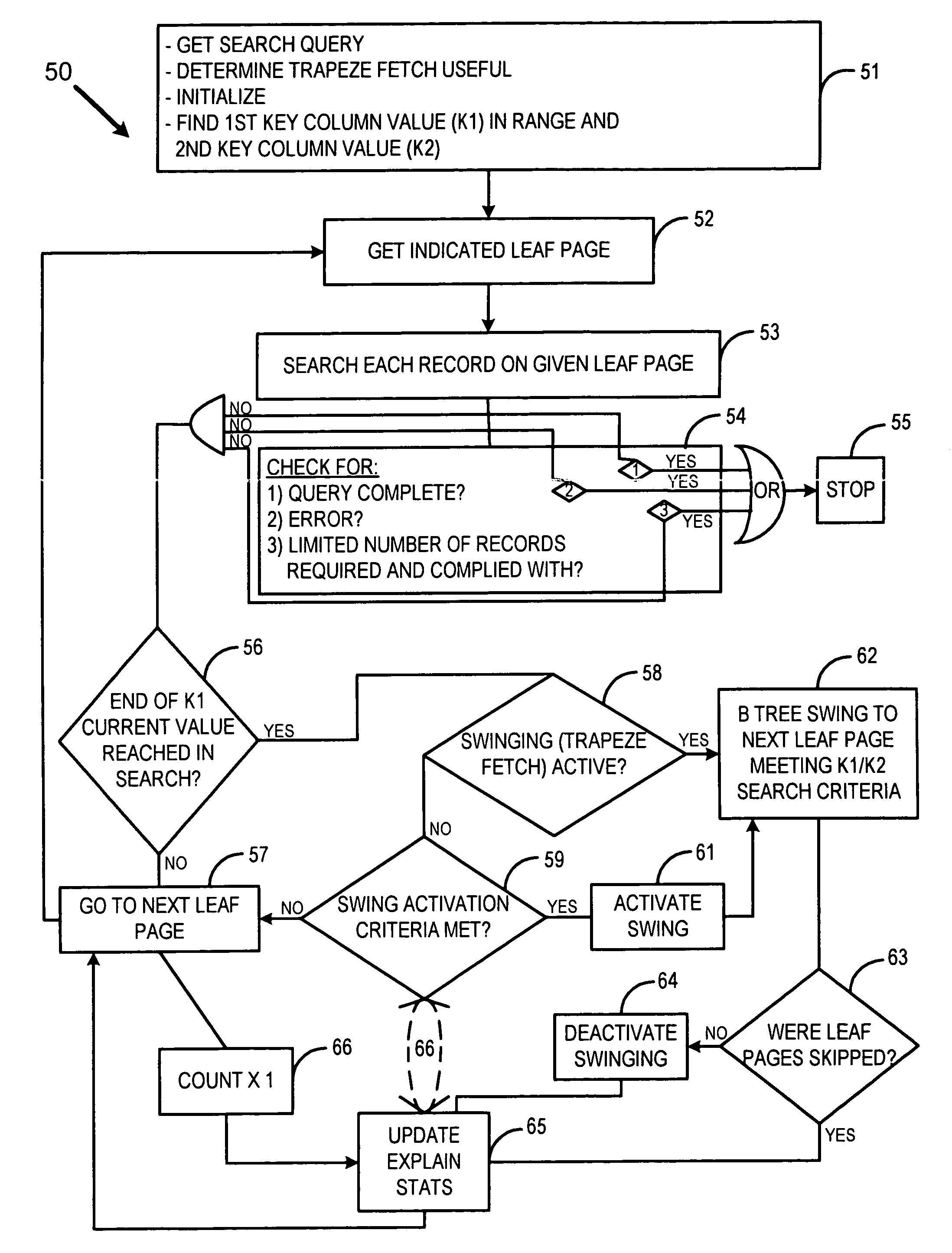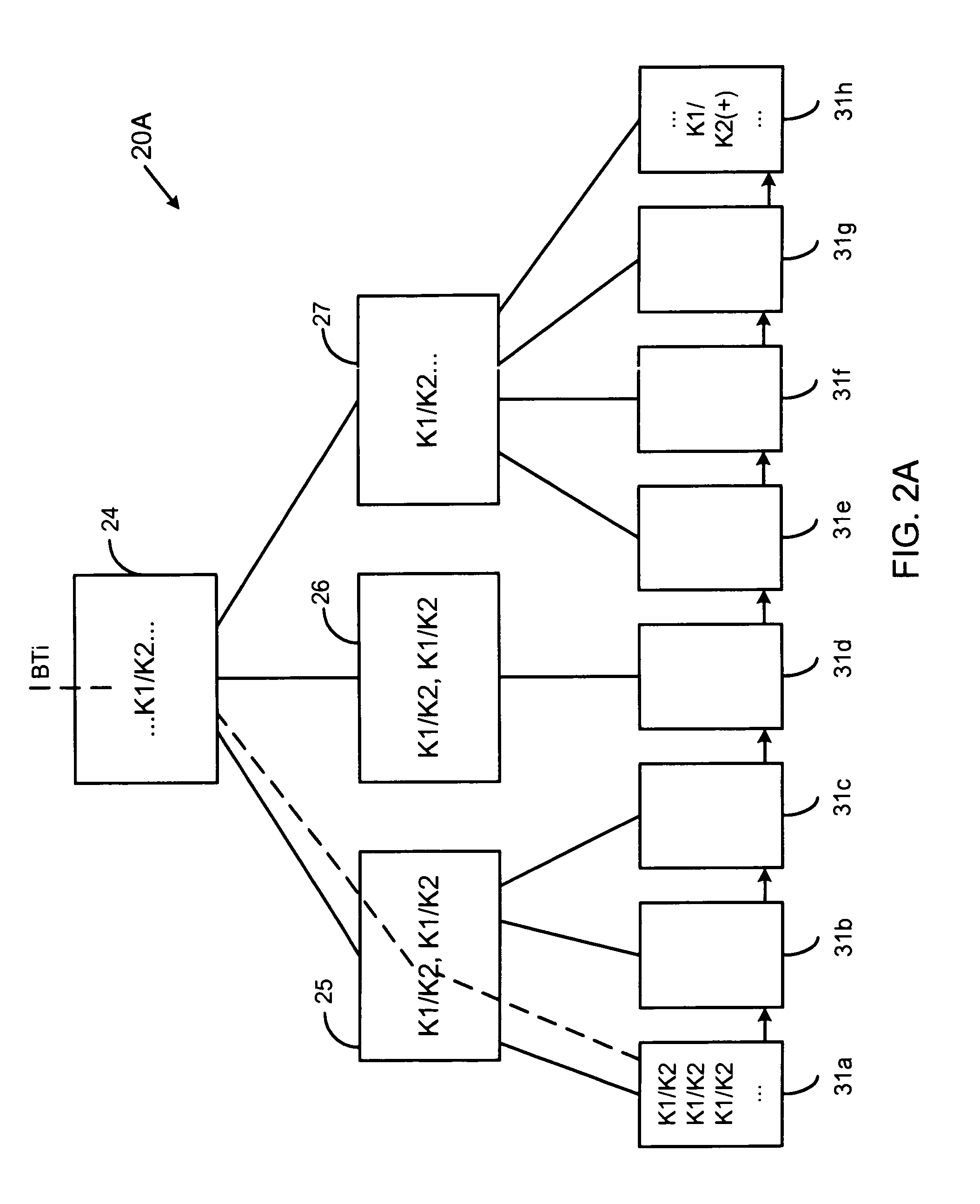Database searching using trapeze fetch
a database and trapeze fetch technology, applied in the field of database searching, can solve problems such as difficulty in getting to the partial answer, b+ trees and b trees, and large database compute and i/o intensive, and achieve the effects of enhancing search performance, enhancing performance, and enhancing search performan
- Summary
- Abstract
- Description
- Claims
- Application Information
AI Technical Summary
Benefits of technology
Problems solved by technology
Method used
Image
Examples
Embodiment Construction
[0025]The general workings of the invention as presently preferred may be described with reference to FIG. 1, consisting of a heuristic block diagram 10 of the inventive components operating within a computer system. The Main or working memory 15 will be used by the various routines for holding record and index data and accessing and using it. The data becomes available to the main memory though a controller 13 which may be directed by various processes within the computer system. For the purposes of this invention, by either the search record-by-record routine 16 or by the get next leaf page by B Tree search routine 12 can access the main memory, but it is convenient to assume that the get next leaf page routine 12 communicates the commands to get the next page needed to search and that the search record-by-record routine accesses the main memory data. In the presently most preferred embodiment, the get next leaf page actually accesses the main memory containing leaf page data to g...
PUM
 Login to View More
Login to View More Abstract
Description
Claims
Application Information
 Login to View More
Login to View More - R&D
- Intellectual Property
- Life Sciences
- Materials
- Tech Scout
- Unparalleled Data Quality
- Higher Quality Content
- 60% Fewer Hallucinations
Browse by: Latest US Patents, China's latest patents, Technical Efficacy Thesaurus, Application Domain, Technology Topic, Popular Technical Reports.
© 2025 PatSnap. All rights reserved.Legal|Privacy policy|Modern Slavery Act Transparency Statement|Sitemap|About US| Contact US: help@patsnap.com



